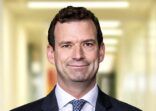A number of fund managers have become cautious on high yield bonds, citing concerns over the global economic slowdown and the late stage of the business cycle.
Emerging markets fixed income manager Alejandro Arevalo at Jupiter Asset Management, for example, recently trimmed down high yield allocation in favour of investment-grade bonds. Other managers and banks, such as Schroders, Robeco, Amundi and Citi Private Bank, have also cautioned investors about investing in high yield bonds.
However, Gershon Distenfeld, New York-based co-head for fixed income and director of credit at Alliance Bernstein, believes that investors should consider investing in high yield bonds.
“One of the things that we hear from investors a lot is that they are afraid of the higher-yielding parts of the fixed income markets because we are in the later part of the cycle and that returns are not great when the yield curve is inverted. The reality is that there may not be a good reason to be worried about it,” he said during a recent media briefing in Hong Kong.
Distenfeld argues that the combination of an inverted yield curve and an interest rate cut in the US, expected on 31 July, should benefit high yield bonds.
“In the previous times that the yield curve has been inverted, we’ve seen three different reactions from the [US Federal Reserve]. When the Fed pre-emptively cut interest rates, which we are expecting them to do now, the risk markets did very well.”
Fed actions when the yield curve was inverted

Distenfeld added that investors may have concerns that default rates may go up due to dwindling company earnings in the later part of the cycle.
“Typically, when we are later in the credit cycle, we see companies borrow lots of money in order take on leveraging transactions. But we’re not seeing that amongst most of the high yield issuers.
“[However] we are not seeing the kind of excesses that we have seen in previous cycles. The net supply of the high yield market has gone down and default rates are expected to be lower this year than they were in 2018.”

European high yield
Separately, Distenfeld singled out Europe’s weak economic growth, which is continuously in the headlines.
“There is opportunity despite of some of the news you see. There’s no doubt that economic data has been weak, but there is a difference between what economies are doing and what credit markets do.”
Distenfeld believes that the quality of European high yield bonds are on average better than those in the US.
“European companies have more conservative capital structures and take on less leverage compared to their US counterparts.”
Although yields are low for the asset class, he argued that yields go up when they are hedged back to US dollars.
“If you buy the European high yield bond that yields at 3.5% and hedge it back to US or Hong Kong dollars, you actually get yields [similar to US high yields with better credit quality],” he said.
The firm’s Global High Yield Bond Fund, which Distenfeld co-manages, has around 6.72% of its assets in Europe (ex-UK) and 2.19% in the UK, according to data from FE. Its highest allocation is in North America, which makes up 52.9% of the portfolio.
The AB Global High Yield Portfolio versus its benchmark index and sector


















